Designing a Woodland Garden
Last week we continued our efforts to increase the integration of the campus proper with the Crum Woods. In accordance with the Swarthmore College Master Plan, we have been planting woodland gardens to extend the edge of our natural area, the Crum Woods, and to expand our distinct sense of place.
Here are some pointers to create your own woodland garden:
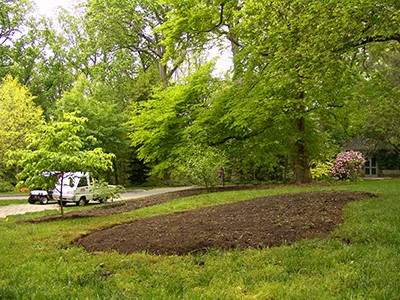
Our latest woodland expansion into Parrish West Circle has two of our oldest Nyssa sylvatica as well as native Cladratis kentukea, Halesia diptera var. magniflora, and Quercus macrocarpo to mention a few that form the mature canopy. photo credit: R. Robert
1. Choose a location with existing mature trees.
Our latest woodland expansion into Parrish West Circle has two of our oldest Nyssa sylvatica as well as native Cladratis kentukea, Halesia diptera var. magniflora, and Quercus macrocarpo to mention a few that form the mature canopy.
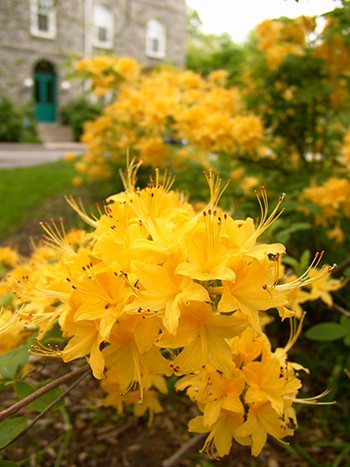
Deciduous azaleas, like Rhododendron ‘Sundance Yellow’, make great shrub layers in woodland gardens. photo credit: R. Robert
2. Select plants appropriate for woodland conditions.
Since woodland gardens are under a canopy of mature trees, the plants selected for that garden must tolerate dappled shade and drier conditions as they are competing for light and water resources.
In the Parrish West Circle, we received a donation of wild-collected deciduous azaleas for our shrub layer. You can also find several cultivars of Enkianthus campanulatus, Hamamelis vernalis ‘Lansing’, and Ilex opaca ‘Dan Fenton’ in this planting.
Some great shade perennials for a woodland garden include: Tiarella cordiflora, Epimedium , Anemone, Aquilegia , Begonia grandis, Carex, Chelone , Brunnera macrophylla, Trillium, Tricyrtis, and Astilbe. Let me emphasize this is a short list. The variety of shade plants is extensive.
3.Give extra help getting a woodland garden established.
As with any new planting, woodland gardens require more frequent watering to become established. They may require extra care because, again, they are under a canopy of mature trees competing for water resources.
Once established, woodland gardens only need an annual top dressing to encourage healthly soil and plant community.
Happy planting.





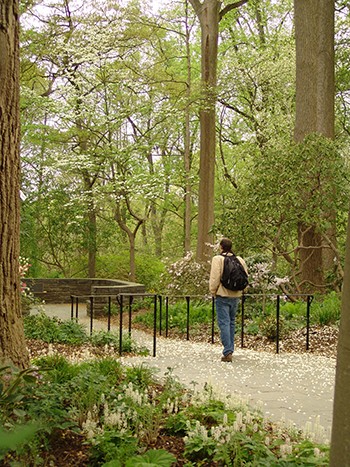
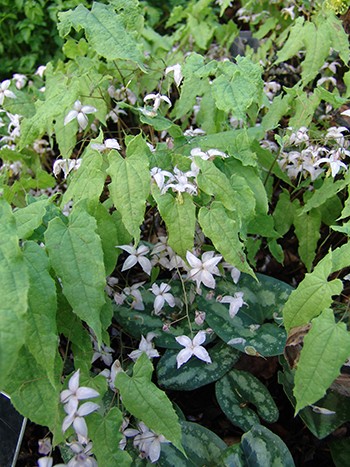
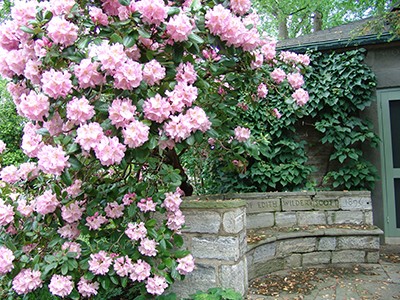
No Comments